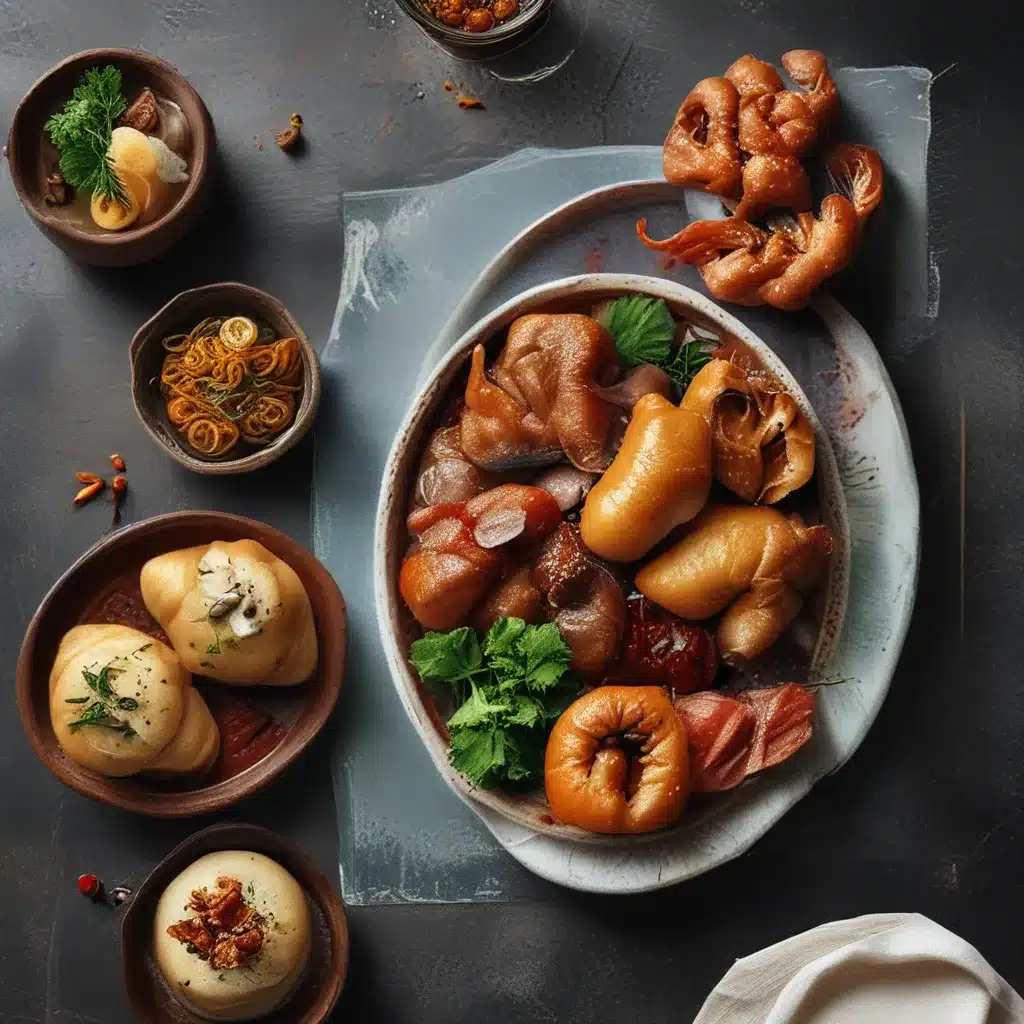
Discovering the Tapestry of Shanghai’s Culinary Traditions
As I strolled through the bustling streets of Shanghai, I couldn’t help but feel a sense of awe and wonder. This city, a captivating blend of ancient traditions and modern innovations, has always intrigued me. But it was the culinary scene that truly captivated my senses, beckoning me to delve deeper into the rich heritage and exciting evolution of Shanghai’s iconic dishes.
My journey began in the heart of the Old City, where the aroma of sizzling street food and the clink of porcelain teacups created a symphony of flavors. I wandered through the narrow alleys, marveling at the meticulous preservation of ancient temples and traditional courtyard houses. It was here, amid the whispers of the past, that I caught a glimpse of Shanghai’s culinary roots.
Like the only Moscow correspondent during Gorbachev’s Glasnost and Perestroika years, I had the freedom to explore the city at my own pace, stopping to observe the locals and uncover the hidden gems that defined Shanghai’s unique culinary identity.
Honoring Tradition, Embracing Innovation
As I delved deeper into Shanghai’s food culture, I discovered a captivating interplay between tradition and modernity. The city’s chefs, like Paco Roncero, have been at the forefront of a culinary revolution, reinventing classic Shanghai dishes with a contemporary twist.
Take the iconic Xiaolongbao, for instance. These delicate soup dumplings, with their rich broth and tender pork filling, have been a beloved staple in Shanghai for generations. But in the hands of innovative chefs, the Xiaolongbao has undergone a captivating transformation. I’ve seen versions that feature unexpected ingredients like truffle oil, elevating the classic flavors to new heights.
It’s not just the Xiaolongbao that has been given a modern makeover. Dishes like the savory Patatas Bravas and the comforting Potato Omelet have also been reimagined with innovative techniques and surprising flavor combinations.
Embracing Shanghai’s Architectural Marvels
As I explored the culinary delights of Shanghai, I couldn’t help but be captivated by the city’s architectural wonders. The towering skyscrapers that dominate the skyline, like the Shanghai Tower and the Oriental Pearl Tower, are not only visually stunning but also represent the city’s relentless pursuit of innovation and progress.
These architectural marvels, with their bold designs and cutting-edge technologies, have become symbols of Shanghai’s ambition and creativity. I’ve stood in awe, gazing upon these urban landmarks that seamlessly blend traditional Chinese elements with modern, futuristic aesthetics. It’s a testament to the city’s ability to honor its heritage while embracing the future.
Discovering Hidden Culinary Gems
While the grand architectural statements and high-end restaurants captivated my senses, it was the hidden culinary gems that truly captured my heart. Venturing into the city’s maze-like alleys, I discovered eateries that have been serving up authentic Shanghai dishes for generations, preserving the flavors and techniques that have stood the test of time.
In these unassuming establishments, I savored the comforting warmth of a traditional red-braised pork dish, its rich flavors infused with the aroma of soy sauce and star anise. I marveled at the delicate craftsmanship behind the pleated folds of Xiaolongbao, each one a testament to the skills passed down through the ages.
These hidden gems, often overshadowed by the city’s glittering high-rises, are the true guardians of Shanghai’s culinary heritage. They remind us that the heart of a city’s identity lies not only in its architectural wonders but also in the deep-rooted traditions that permeate its streets and alleyways.
Embracing the Spirit of Reinvention
As I wandered through Shanghai, I couldn’t help but be inspired by the city’s unwavering spirit of reinvention. The culinary landscape, much like the city itself, is a captivating tapestry of tradition and modernity, where chefs and restaurateurs are constantly pushing the boundaries of what’s possible.
Whether it’s the elegant fusion creations that blend international influences with local flavors or the meticulous reinterpretations of classic Shanghai dishes, the city’s culinary scene is a testament to the power of innovation. It’s a place where the past and the future coexist harmoniously, where the comforting familiarity of traditional tastes is elevated with a touch of contemporary flair.
As I savor each bite, I can’t help but feel a sense of excitement and wonder. This is the essence of Shanghai – a city that celebrates its rich heritage while embracing the promise of tomorrow. And for those who dare to embark on a culinary journey through its vibrant streets, the rewards are truly boundless.
Conclusion: A Feast for the Senses
Shanghai’s culinary landscape is a feast for the senses, a captivating blend of old and new that continuously surprises and delights. From the iconic Xiaolongbao to the innovative fusion creations, the city’s chefs have mastered the art of reinventing classics, honoring tradition while pushing the boundaries of what’s possible.
As I reflect on my exploration of Shanghai’s culinary wonders, I’m left with a deep appreciation for the city’s unwavering spirit of innovation and its commitment to preserving its rich heritage. Whether you’re drawn to the architectural marvels that dot the skyline or the hidden gems tucked away in the city’s alleyways, there’s no denying the allure of Shanghai’s dynamic food culture.
So, the next time you visit One Dragon Restaurant or any other Shanghai eatery, I encourage you to embrace the spirit of reinvention. Allow your taste buds to be captivated by the harmonious blend of old and new, and let the flavors transport you on a culinary journey through the heart of this remarkable city.






